Rob Bignell's Blog, page 332
June 9, 2014
Use bridge to transition from flashback to present
Sometimes when 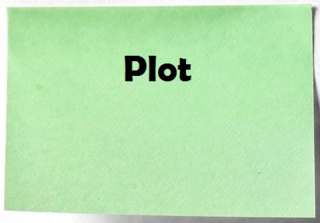 reading a story, readers find themselves doing a double take and re-reading a page or two. This usually occurs because readers are no longer able to make sense of the narration. They’ve lost their way and are backtracking.
reading a story, readers find themselves doing a double take and re-reading a page or two. This usually occurs because readers are no longer able to make sense of the narration. They’ve lost their way and are backtracking.
As an author, your job is to lead readers through the story. If readers get lost, they may become confused over what the story is about, hence reducing your tale’s effectiveness. When readers are lost, the fictional dream is broken, and if a genre work such as science fiction and fantasy, that’s detrimental. Many readers who’ve lose their way may simply quit reading your story and move on to another author.
Usually readers get lost when the writer switches scenes but doesn’t adequately signal this is occurring. The problem usually is easy enough to resolve – simply put a blank line of text between the two scenes or start a new chapter.
Going in and out of flashbacks, however, doesn’t allow the writer to utilize either strategy. Instead, the writer has to utilize a bridge, which is a phrase or sentence that links two different scenes. This also is known as a segue or a transition.
Consider this passage, which ends in a flashback:
Lyle gasped at the sight of his stricken father. As a child, he heard a faint crying in the quiet. Creeping down the stairs, he peeked about the living room entry into the kitchen, spied him flat across the tile, lowing like a calf upon a distant field. He did not know what to do, was too small to save him. With a long, drawn sigh, the young boy stepped back and ever so softly returned to his room.
Lyle kneeled at his father’s side. “What do you want me to do, Dad?” There was a long pause, filled with no sound but Carl Steinar’s occasional sobs. Then Lyle continued. “Well, Dad? Do you want me to let you kill yourself?” The old man did not respond, remained distant as an uneasy dog. Outside, wind randomly struck at the chimes hanging upon the porch.
You probably found the passage confusing. Even though you were told that it would include a flashback, knowing exactly when it came back to the time frame that the story is being narrated in was unclear, at least initially.
But now consider the same passage with a couple of bridges:
Lyle gasped at the sight of his stricken father. It reminded him of many years ago when as a child he heard a faint crying in the quiet. Creeping down the stairs, he peeked about the living room entry into the kitchen, spied him flat across the tile, lowing like a calf upon a distant field. He did not know what to do, was too small to save him. With a long, drawn sigh, the young boy stepped back and ever so softly returned to his room.
Fourteen years later, Lyle kneeled at his father’s side. “What do you want me to do, Dad?” There was a long pause, filled with no sound but Carl Steinar’s occasional sobs. Then Lyle continued. “Well, Dad? Do you want me to let you kill yourself?” The old man did not respond, remained distant as an uneasy dog. Outside, wind randomly struck at the chimes hanging upon the porch.
The bridges It reminded him of many years ago when as a child and Fourteen years later helped you as a reader to understand that the story’s time and location was shifting.
When writing, ensure that the bridge is smooth and unobtrusive. You don’t want to draw attention to the transition itself but instead make it part of the story’s natural flow.
Need an editor? Having your book, business document or academic paper proofread or edited before submitting it can prove invaluable. In an economic climate where you face heavy competition, your writing needs a second eye to give you the edge. Whether you live in a big city like San Francisco or a small town like Eastbrook, Maine, I can provide that second eye.
Related articles
 Reviewer gives editor's novel positive review
Reviewer gives editor's novel positive review Add color to your fiction manuscript
Add color to your fiction manuscript
June 8, 2014
Five Great Quotations about Fiction
“What we 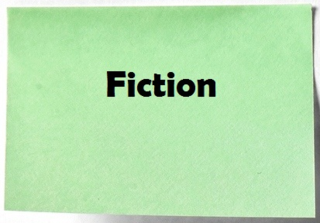 call fiction is the ancient way of knowing, the total discourse that antedates all the special vocabularies....Fiction is democratic, it reasserts the authority of the single mind to make and remake the world.” - E. L. Doctorow
call fiction is the ancient way of knowing, the total discourse that antedates all the special vocabularies....Fiction is democratic, it reasserts the authority of the single mind to make and remake the world.” - E. L. Doctorow
“Unlike the actual, the fictional explains itself.” - Mason Cooley
“Fiction is about stuff that's screwed up.” - Nancy Kress
“Imaginary evil is romantic and varied; real evil is gloomy, monotonous, barren, boring. Imaginary good is boring; real good is always new, marvelous, intoxicating. 'Imaginative literature,' therefore, is either boring or immoral or a mixture of both.” - Simone Weil
“Fiction writing is great. You can make up almost anything.” - Ivana Trump
Need an editor? Having your book, business document or academic paper proofread or edited before submitting it can prove invaluable. In an economic climate where you face heavy competition, your writing needs a second eye to give you the edge. Whether you live in a big city like Atlanta or a small town like Parkers Crossroads, Tennessee, I can provide that second eye.
<A HREF="http://ws-na.amazon-adsystem.com/widg... Widgets</A>Related articles
 Five great quotations about fiction
Five great quotations about fiction Five Great Quotations about Characters
Five Great Quotations about Characters Five Great Quotations about Characters in a Story
Five Great Quotations about Characters in a Story Avoid 'As you know' Syndrome in fiction
Avoid 'As you know' Syndrome in fiction
June 7, 2014
How long should my young adult novel be?
Q: What is a good length for YA novels? 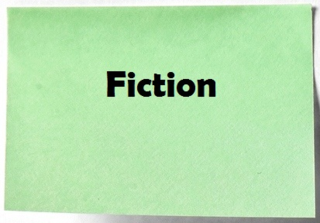
A: When writing for young adults – that is teenagers and the early 20s crowd – your book typically needs to be shorter than what you would write for adults. Generally, 70,000-90,000 words works for adult readers, with fantasy and science fiction novels able to go a little longer, sometimes up to 110,000 words.
For 8-12 year olds, however, 25,000-35,000 words is a good range. For example, Dan Gutman’s “The Homework Machine” is 26,448 words while “The Kid Who Ran for President” is 34,098.
For 13-15 year olds, 30,000-45,000 words is fine. Lois Lowry’s “The Giver” is at the high end of this count at 43,617.
For 16-20 year olds, 40,000-70,000 words works well. Jay Asher’s “Thirteen Reasons Why” is 62,496.
As with adults, fantasy and science fiction novels usually can go a little longer.
Of course, there always are exceptions to the rule. J.K. Rowling’s Harry Potter books, after all, break all of the above word count rules. Her works also are exceptionally brilliant, and a YA reader likely will put back on the shelf a book of the same length by most other authors.
Need an editor? Having your book, business document or academic paper proofread or edited before submitting it can prove invaluable. In an economic climate where you face heavy competition, your writing needs a second eye to give you the edge. I can provide that second eye.
<A HREF="http://ws-na.amazon-adsystem.com/widg... Widgets</A>Related articles
 Maintain 'fictional dream' when penning novel
Maintain 'fictional dream' when penning novel Avoid 'As you know' Syndrome in fiction
Avoid 'As you know' Syndrome in fiction Promote book with Goodreads author's page
Promote book with Goodreads author's page
June 6, 2014
Include note asking readers to post a review
One of  the quickest ways to generate an online book sale is to ensure you have reviews posted about your title. Research indicates that readers interested in buying a book often look at posted reviews – especially those written by everyday people – to determine if they should make the purchase or move on. To that end, rather than pay or beg someone to write a review, instead simply include a note at the end of your book that says something like, “If you enjoyed this book, please post a review of it online at… Thank you for your support.” Include the URL in the paperback and an actual link in the ebook. Especially with ebooks, in which reviews can be posted with a couple of taps of the screen, you’ll find a number of readers taking you up on your offer. Best of all, these reviews will be written by people who actually purchased your book and who actually read (and liked!) it.
the quickest ways to generate an online book sale is to ensure you have reviews posted about your title. Research indicates that readers interested in buying a book often look at posted reviews – especially those written by everyday people – to determine if they should make the purchase or move on. To that end, rather than pay or beg someone to write a review, instead simply include a note at the end of your book that says something like, “If you enjoyed this book, please post a review of it online at… Thank you for your support.” Include the URL in the paperback and an actual link in the ebook. Especially with ebooks, in which reviews can be posted with a couple of taps of the screen, you’ll find a number of readers taking you up on your offer. Best of all, these reviews will be written by people who actually purchased your book and who actually read (and liked!) it.
Need an editor? Having your book, business document or academic paper proofread or edited before submitting it can prove invaluable. In an economic climate where you face heavy competition, your writing needs a second eye to give you the edge. Whether you be from a big city like Washington, D.C., or a small town like Bull Creek, Missouri, I can provide that second eye.
<A HREF="http://ws-na.amazon-adsystem.com/widg... Widgets</A>Related articles
 Does your book cover design matter for ebooks?
Does your book cover design matter for ebooks? How to create page breaks in your ebook
How to create page breaks in your ebook How to link your ebook's table of contents
How to link your ebook's table of contents '7 Minutes a Day' now available in paperback!
'7 Minutes a Day' now available in paperback!
June 5, 2014
What are ‘The Big Six’ book publishers?
While researching 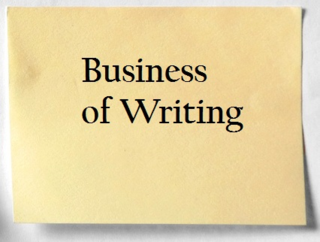 how to get published, one term you’re likely to run into is “The Big Six”. This refers to six publishing houses that have dominated the book industry in the United States. The majority of books were published by them, and the majority of books appearing in bookstores, discount stores, and supermarkets came from them.
how to get published, one term you’re likely to run into is “The Big Six”. This refers to six publishing houses that have dominated the book industry in the United States. The majority of books were published by them, and the majority of books appearing in bookstores, discount stores, and supermarkets came from them.
Except the article you were reading is slightly out of date.
Don’t worry, the explanations of how the book industry works and advice about how to angle that to your advantage if self-publishing probably is still accurate. But as of July 2013, there are only five big publishing houses, as two of the Big Six merged.
The Big Five include Hachette, HarperCollins, Macmillan, Penguin Random House, and Simon and Schuster. The Penguin Group and Random House merged to become Penguin Random House. HarperCollins and Simon and Schuster are the only two U.S. companies. The others are German, British or French.
So why then when you go to a bookstore do there appear to be dozens (if not hundreds) of publishing houses? First, many of the Big Five have divisions or imprints, which are smaller publishing houses that they’ve gobbled up over the years. For example, Avon Publications and Harlequin once were independent but now are owned by HarperCollins. In addition, there are a number of small independent presses still operating, such as Graywolf Press and Grove Atlantic.
Need an editor? Having your book, business document or academic paper proofread or edited before submitting it can prove invaluable. In an economic climate where you face heavy competition, your writing needs a second eye to give you the edge. Whether you come from a big city like Minneapolis or a small town like Milstone, New Jersey, I can provide that second eye.
Amazon.com Widgets
June 4, 2014
Capitalize nouns of direct address
Sometime, words  can serve as both proper and common nouns. You’ll recall from the drones of your middle school English teacher that proper nouns are those that need to be capitalized, like city names (Denver, Atlanta, Miami) and states (Colorado, Georgia, Florida), while common nouns refer to everyday items (mountains, peaches, nightclubs). One place this gets tricky is when using common nouns that refer to people, such as mom, dad, mama, pops, grandma and grandpa.
can serve as both proper and common nouns. You’ll recall from the drones of your middle school English teacher that proper nouns are those that need to be capitalized, like city names (Denver, Atlanta, Miami) and states (Colorado, Georgia, Florida), while common nouns refer to everyday items (mountains, peaches, nightclubs). One place this gets tricky is when using common nouns that refer to people, such as mom, dad, mama, pops, grandma and grandpa.
The simple rule is to just capitalize them in dialogue when the character directly speaks to that person (which is a noun of direct address). Otherwise, they're lowercase.
RIGHT: I'll ask dad for the car keys.
WRONG (in more ways than one): If Dad won't give them to me, I'll ask Mom.
RIGHT: "Hey Dad, see you later,” Stan said, “can I can have the car keys, please?"
The rule follows the principle that in dialogue you’re using a common noun as a name, which is a proper noun. In other words, if you’re asking for the car keys, show some deference to authority.
Need an editor? Having your book, business document or academic paper proofread or edited before submitting it can prove invaluable. In an economic climate where you face heavy competition, your writing needs a second eye to give you the edge. Whether you hail from a big city like Philadelphia or a small town like Pittsburgh, New Hampshire, I can provide that second eye.
<A HREF="http://ws-na.amazon-adsystem.com/widg... Widgets</A>
Related articles
 When to use affect vs. effect
When to use affect vs. effect Time to get it right: Past vs. passed
Time to get it right: Past vs. passed
June 3, 2014
How formal should be your novel’s voice?
Especially if 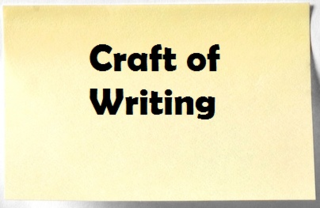 most of an author’s writing is for schoolwork or the business world, sometimes he’ll utilize a formal style when penning a novel or an essay. This formal approach isn’t always the best one to take, however, for their non-academic and non-business writing.
most of an author’s writing is for schoolwork or the business world, sometimes he’ll utilize a formal style when penning a novel or an essay. This formal approach isn’t always the best one to take, however, for their non-academic and non-business writing.
The degree of formality an author should use when writing largely is determined by his audience and their expectations. Given this, authors need to readjust their voice – which include diction (word choice, sentence structure), narrative drive (pacing), and color (descriptive details) – when writing.
Formality is a scale. Three general levels of formality, sometimes called language registers, include:
g Formal – This is professional, standard English. It is used in academic papers, cover letters, and job applications.
g Semi-formal – Though also making use of Standard English, a semi-formal voice typically is friendlier. It sometimes is referred to as social language, or a voice that is used when trying to establish yourself as a member of a community. This often is used in magazine articles, advertisements, or in situations in which the author is familiar with audience members who would otherwise require a formal style.
g Informal – In this voice, you are not worried about grammar as the conversation is casual, sometimes intimate, and typically colloquial (the language of everyday speech). An informal voice is used in a letter to a friend or a text message.
Switching our written voice to a semi-formal or informal one is not always easy for authors, who typically excelled in language arts classes where they were taught to write in a formal style. Still, gauging which voice is important in helping to select the best mode of language to most successfully express an idea.
What is the best language register to use in a novel or short story? This depends on the effect the author wishes to achieve, which usually is achieved via the narrator’s personality. In most cases, a semi-formal approach, as F. Scott Fitzgerald uses via Nick Carraway in “The Great Gatsby,” will do; the grammar is correct (and so easy to read), and the narrator speaks to readers as if they are acquaintances. In others, such as Mark Twain’s “The Adventures of Huckleberry Finn,” only an informal style could work, as the novel is narrated by an illiterate boy.
Need an editor? Having your book, business document or academic paper proofread or edited before submitting it can prove invaluable. In an economic climate where you face heavy competition, your writing needs a second eye to give you the edge. I can provide that second eye.
<A HREF="http://ws-na.amazon-adsystem.com/widg... Widgets</A>Related articles
 Getting to the core: Amid vs. amidst
Getting to the core: Amid vs. amidst How to make your writing show rather than tell
How to make your writing show rather than tell
June 2, 2014
Don’t underserve a character in story
Among the 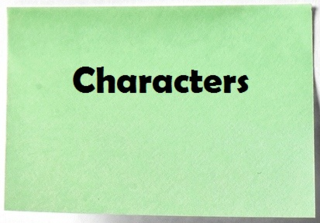 challenges of penning a novel or short story is to ensure that a character is used just the right amount in a story. When an author keeps a character from being involved too much in the story’s plot, the character is often said to be underserved.
challenges of penning a novel or short story is to ensure that a character is used just the right amount in a story. When an author keeps a character from being involved too much in the story’s plot, the character is often said to be underserved.
For example, if one of the characters in a story about a family of four was fairly flat or undeveloped, that character would be underserved. Perhaps more about the characters’ motivations and personality or possibly more about his conflict with other three needs to be added.
You’ll often find examples of underserved characters in television series. Acting contracts that demand a certain number of speaking lines per episode and the time constraints imposed by commercials can periodically force various character to appear less than they should to further the storyline.
By underserving, authors undercut the drama. If the story deals with a family of four, then each of the four characters probably should have conflicts with the other three. If one character lacks any conflicts, however, the section of the story dealing with him likely will not move along the story’s plot.
Usually authors underserve peripheral characters, especially those that the writer has little sympathy for. This lack of sympathy prevents the author from fully exploring and acknowledging the value of the character’s needs and motivations.
Need an editor? Having your book, business document or academic paper proofread or edited before submitting it can prove invaluable. In an economic climate where you face heavy competition, your writing needs a second eye to give you the edge. I can provide that second eye.
<A HREF="http://ws-na.amazon-adsystem.com/widg... Widgets</A>Related articles
 How to overcome annoying writer's block
How to overcome annoying writer's block How to create suspense in your fiction story
How to create suspense in your fiction story Conflict: The heart of every story
Conflict: The heart of every story Create meaningful settings in your story
Create meaningful settings in your story Create successful story by staging it
Create successful story by staging it
June 1, 2014
Five Quotations about Writing as Self-Discovery
“What obsesses  a writer starting out on a lifetime's work is the panic-stricken search for a voice of his own.” – John Mortimer
a writer starting out on a lifetime's work is the panic-stricken search for a voice of his own.” – John Mortimer
“We write to taste life twice, in the moment and in retrospect.” – Anaïs Nin
“Most of the basic material a writer works with is acquired before the age of fifteen.” – Willa Cather
“Writing isn’t about making money, getting famous, getting dates, getting laid, or making friends. In the end, it’s about enriching the lives of those who will read your work, and enriching your own life, as well. It’s about getting up, getting well, and getting over. Getting happy, okay? Getting happy.” – Stephen King
“The more closely the author thinks of why he wrote, the more he comes to regard his imagination as a kind of self-generating cement which glued his facts together, and his emotions as a kind of dark and obscure designer of those facts. Reluctantly, he comes to the conclusion that to account for his book is to account for his life.” – Richard Wright
Need an editor? Having your book, business document or academic paper proofread or edited before submitting it can prove invaluable. In an economic climate where you face heavy competition, your writing needs a second eye to give you the edge. I can provide that second eye.
<A HREF="http://ws-na.amazon-adsystem.com/widg... Widgets</A>Related articles
 Five Great Quotations for Aspiring Writers
Five Great Quotations for Aspiring Writers Five great quotations about fiction
Five great quotations about fiction Five Quotes About Where Stories Come From
Five Quotes About Where Stories Come From Five great quotations for aspiring writers
Five great quotations for aspiring writers Five Great Quotations about Editing
Five Great Quotations about Editing
May 31, 2014
Develop complex antagonist to maximize conflict
In most 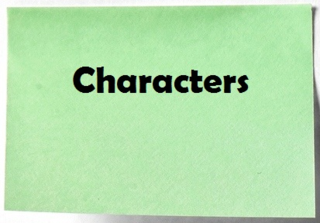 stories, someone causes the problem that vexes the main character. This character is called the antagonist.
stories, someone causes the problem that vexes the main character. This character is called the antagonist.
Examples of well-known antagonists include the Wicked Witch of the West in “The Wizard of Oz,” Sauron from “The Lord of the Rings,” and Scar in “The Lion King.”
Usually a story is not told from the antagonist’s perspective. In fact, often the antagonist is a flat, cardboard character whose sole reason for existence is to cause trouble. This was one of the complaints “Star Trek” creator Gene Roddenberry had of the Klingons in “The Original Series.”
Obviously the main character needs to be the focus of your story, and so the antagonist in contrast will not be as developed. Still, you want to think a lot about the antagonist and give him deeper motives than greed, lust or evil. He’s arguably the second most important character of your story, after all, and the reason why there’s even a story to tell. By developing a backstory for the antagonist’s motivations, you can create thematic tension. The antagonist’s motivations can be paralleled with and contrasted to the protagonist’s motivations and decisions.
As with the main character, you should know what your antagonist looks like, his strengths and weaknesses, his likes and dislikes, what motivates him, his parents and schooling, who he’s dated throughout his life, the foods he enjoys and hates, what he does during his free time, how his apartment is decorated, places he’s visited and places he yet wants to go, and more. You should know your antagonist almost as well as you know yourself.
In addition, sometimes, the antagonist is not a “real” person but an element of nature or some competing idea in the main character’s internal conflict. Often these antagonists take on a life of their own, becoming characters in their own right.
Need an editor? Having your book, business document or academic paper proofread or edited before submitting it can prove invaluable. In an economic climate where you face heavy competition, your writing needs a second eye to give you the edge. I can provide that second eye.
<A HREF="http://ws-na.amazon-adsystem.com/widg... Widgets</A>Related articles
 Develop conflicts related to resolving your story's central problem
Develop conflicts related to resolving your story's central problem Draw readers into story with great opening lines
Draw readers into story with great opening lines



